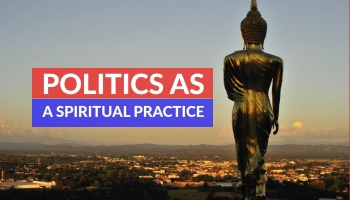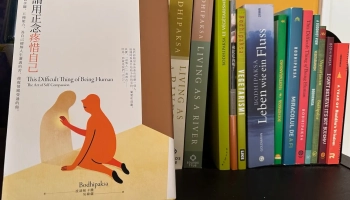
[ad_1]

Walking is a fundamental theme in my life. Each step beats like a metronome, both setting my pace and responding to the pace of my life.
Step. Step.
Breath. Breath.
My love of walking started when I was 22. I traveled to Nepal and walked the Annipurna Circuit, a trek which took about 3 weeks. This 125+ mile walk looped through terraced rice fields, crossed mountain rivers on bamboo footbridges, meandered through rainforest and finally, crossed the snow-covered Thorong La pass at 17,769 ft.
After this, I was hooked. Walking became my favorite mode of transportation.
I have walked thousands of miles, in cities and in parks, in cold weather and in hot, in flat lands and in mountains. Any walking is good walking.
There are many things I love about walking. I love the very un-modern pace, slow enough to experience the world as I walk through it. I love the full body experience. Smells. Sounds. Feeling the wind on my skin and the earth beneath my feet.
And I love the time to be both part of the world and separate from it. I walk through people’s lives and I watch them going about their day. We may interact or not– but I continue on.
Most of my walking is freeform contemplation–some hazy place between daydreaming and quiet openness. Sometimes I’ll have a specific topic or concern. While I may or may not get an insight but I’ll often come back with a deeper sense of calm and groundedness.
But walking can also be a formal meditation practice. And for many, this can be a rich addition to their meditation toolkit.
What is Walking Meditation?
Walking meditation brings mindfulness and awareness to walking. Instead of sitting on a cushion or chair, you walk.
There are a couple of ways you can approach walking meditation.
You can bring mindfulness to your walking. With this approach, you are aware of the sensations of walking– the pressure on your feet as your weight shifts, the feeling of the air as it moves past your skin. You focus your awareness on walking.
The other approach is to bring walking into your meditation. Here, walking is just another position to use for meditation. You use the same meditation techniques you would when you are sitting– you can focus on sounds, thoughts, emotions, or even simply move with open awareness. You are just walking as you do it.
In either case, walking and meditation are combined.
Why use Walking Meditation?
Walking meditation is a great way to weave your meditation practice into your everyday life.
Sometimes, your practice gets stuck, rote. You have your practice and you have your life, and no matter what you do, the gap between the two can feel quite vast. As soon as you leave your cushion and life hits, you move straight out of mindfulness and into your habitual thought patterns.
Walking meditation forms a bridge between the two. You practice moving your body like your everyday life while noticing your mind like your meditative practice.
Your practice and your life merge into one. Walking helps you experience this.
How do you do Walking Meditation?
Walking meditation can be done a couple of different ways.
Sometimes you slow the walking down. You experience every shift, every step, every change in your body deliberately and with awareness.
In other traditions, you walk at a normal pace, exactly how you normally walk. If someone watched you, they wouldn’t know that you are meditating.
In either case, you don’t space out. Your mind is present. You’re not lost.
You walk with awareness.
Try walking the next time you want to freshen your meditative practice. Put on your shoes and step outside. Rain or shine, city or country, alone or in a crowd, bring your practice with you. Watch your mind as you move. Experience embodiment in a new way. And notice how your practice changes as you take it off the cushion.
[ad_2]
Source link






